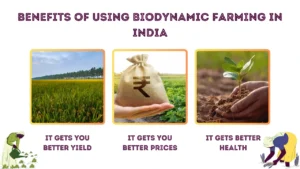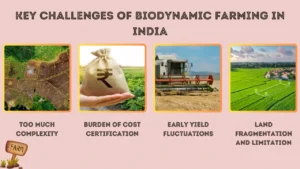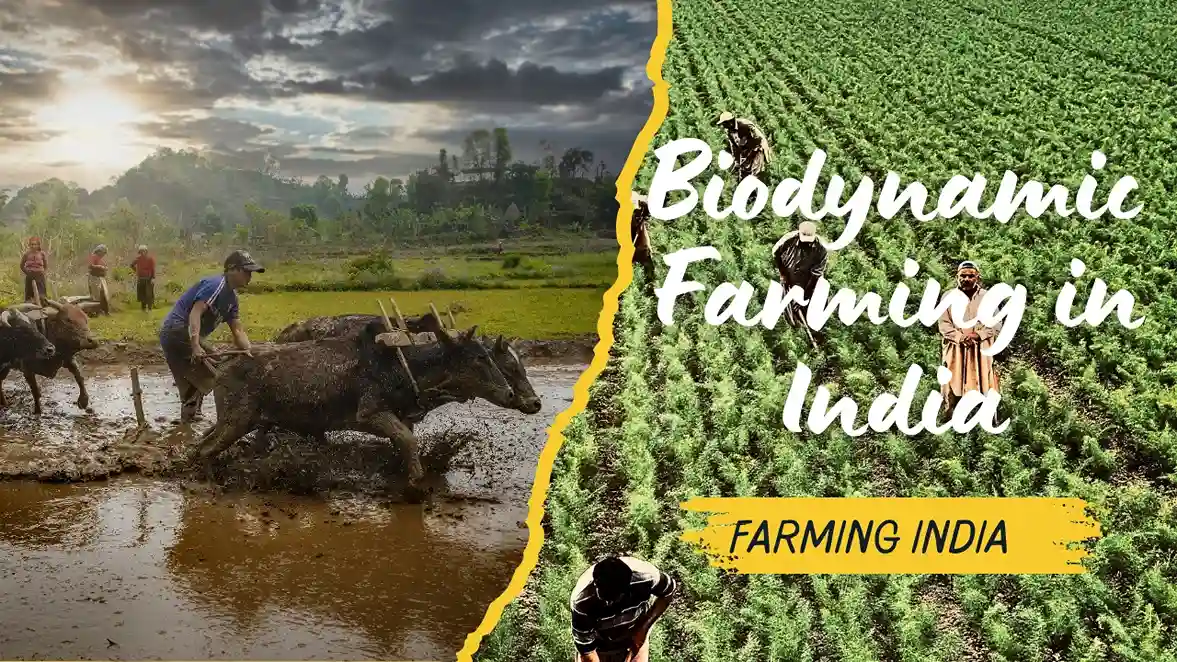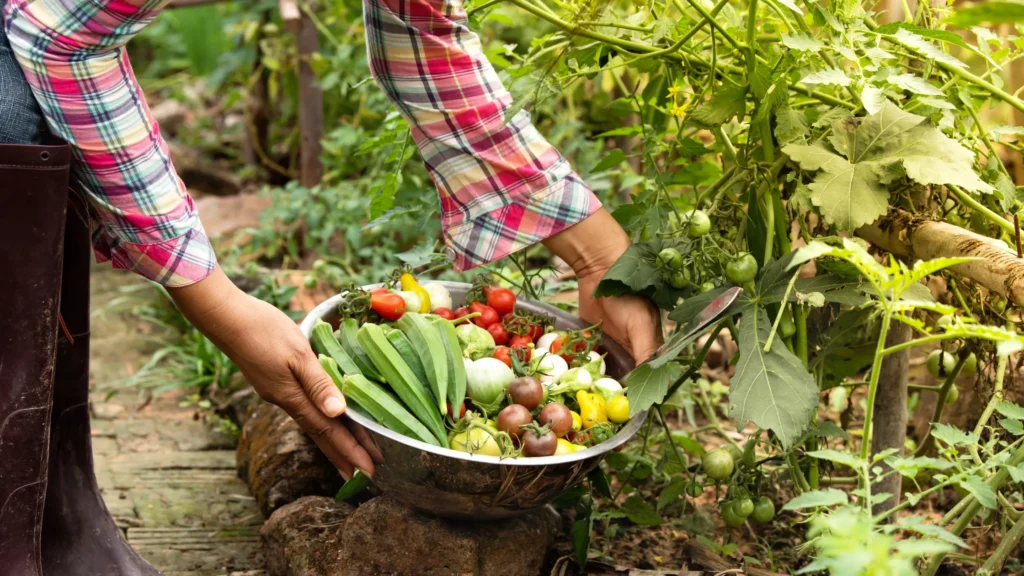On the surface, adoption movements for organic farming and biodynamic farming in India look similar. Both of these practices, built on similar principles, follow similar practices, and share the same goal: that being, to break away from non-organic and synthetic pesticides, chemicals, and compost, creating an all-natural, pure result on one’s farm.
Yet, throughout the subcontinent, organic farmers do not see themselves ever adopting the practice of biodynamic farming. So, what gives? Why is there no widespread acceptance of biodynamic farming in India?
This lack of acceptance has always fascinated me. As a dedicated organic farmer in India with 25+ years of experience, the practice of biodynamic farming in India, with its focus on treating a farm as a spiritual place, along with a place of worship, seems like a perfect fit.
According to the Demeter International database, there are only 48 certified biodynamic projects in India, covering an area of about 9,131.89 hectares. That is a minuscule amount compared to the gigantic size of farmable land India holds potential for.
Well, as it turns out, there are specific reasons for it, and that is what I’ll be diving into in this blog. I will also be going over its fundamental principles and approaches to make this blog more inclusive for newcomers.
Sounds good? Let’s begin!
What is Biodynamic Farming?
Okay, let’s start with understanding biodynamic farming to get the vantage points before we dive into the reasons for its low acceptance.
While it shares similar practices and overall goals, at its core, biodynamic farming in India is far more distinct from organic farming because the acceptable ways to reach those goals are for both practices.
Created in 1924 by Rudolf Steiner, the father of biodynamic farming, in his series of lectures known as “Spiritual Foundations for a Renewal of Agriculture,” biodynamic farming is a holistic approach that aims to enhance soil health and plant growth with the help of spiritual practices.
The focus of cosmic and spiritual elements is even reflected in its name. Biodynamic farming, derived from the Greek words “bios” (life) and “dynamos” (energy), is a practice of creating a closed-loop, self-sustaining system on one’s farmland, utilizing astronomical events as a guide.
The fundamental difference changes how a farmer in organic farming, versus a farmer in biodynamic farming, sees their land and defines its purpose.
In biodynamic agriculture, a farmer follows a core principle of creating a closed-loop’ system, making and treating it as a self-sustaining organism with its own distinct identity. The holistic approach ensures the farm relies entirely on its internal resources and completely avoids all contact with external pesticides and fertilizers.
In contrast, in organic farming, a farmer often struggles to fully embrace this narrow perspective. The goal is the same, yet organic farms might still choose to depend on outside inputs for nutrients and feed.
In the practice of organic farming, the overall focus is on natural soil health and plant growth. Biodynamic farming takes it a step further by incorporating cosmic rhythms, such as the lunar cycle, with the goal of enhancing things like nutritional value even more.
Overarching Benefits of Using Biodynamic Farming in India

Alright, now that we understand what biodynamic farming is, it’s important to consider how valuable it can be If a farmer decides to adopt the practice of biodynamic farming in India.
It Gets You Better Yield
While it is not 100% proven, there is enough evidence to say that adopting biodynamic farming in India can increase the yield by up to 20%.
The most notable but inconclusive study of this type of farming was conducted by scientists at the Indian Council of Agricultural Research (ICAR). The experiment was conducted between 2003 and 2006 in Ooty, with potatoes, carrots, and French bean selected as crops.
While the long-term assessment, through crop-cutting experiments, wasn’t done, short-term research did indeed see an increase in yield. The study concluded that, in terms of products concerning nutrition, appearance, and shelf life, they were all better in biodynamic agriculture compared to conventional agriculture.
It Gets You Better Prices
Thanks to their pledge to ignore all outside fertilizers and synthetic chemicals in favor of in-house production, even compared to organic farming, biodynamic farming in India is significantly cheaper when it comes to input costs for farmers.
On top of this, in 2020 and beyond, there is a growing shift in the minds of Indian consumers toward healthier, richer and most importantly, certified organic or related products, particularly for products like tea and coffee.
Any farmer growing these crops, with proper certification from the biodynamic association of India can charge premium prices for both the consumer and and industry giants.
It Gets Better Health
Compared to organic farming, the levels of vitamins, minerals, amino acids and overall nutritional punch is much better in crops grown with biodynamic farming in India.
One study, conducted by the agricultural department of Karla, found that biodynamic carrots, okra, and onions were significantly better in terms of health than commercially grown versions.
While the trial ultimately concludes, further long-term studies are needed under diverse Indian climates to be sure. It is no doubt that incorporating the practice of the lunar cycle and an in-house closed-loop system will definitely deliver a positive impact on the quality of the food, hence, bettering the lives of the farmers and their families.
Also, Read: Sowing the Seeds of Success: The Rise of Greenhouse Farming in India
Key Challenges of Biodynamic Farming in India

Okay, it’s finally time to get to the core of this blog. Ultimately, while the potential of biodynamic farming in India are immense, there are several key challenges that hold us farmers back. Here are the most notable ones that I believe impact its acceptance the most.
Too Much Complexity
Growing from conventional practices to adopting organic farming practices is hard enough for most farmers; growing from organic practices to biodynamic farming is even harder.
The entire practice demands a reeducation for things like the lunar calendar and how it can be incorporated into farming as a guide, all the way to harvesting. On top of necessitating additional, specific biodynamic preparations, such as acquiring BD-500 (which is made from cow manure fermented in a cow horn) and BD-501 (which is made from crushed quartz) before even starting the implementation.
All in all, These specialized conditions, both in terms of resources and timing, are the single biggest reason that make farmers drop the adoption of biodynamic farming.
Burden of Cost Certification
The next biggest factor that holds back the adoption of biodynamic practices countrywide is the high cost and conditions to get certification in India. Primarily driven by the industry’s shift toward more organic and specialized farmed crops, especially for crops like tea and coffee, the cost of acquiring a certificate has jumped to ₹50,000 to ₹1,00,000.
Most Indian farmers work under strict financial restrictions and often have to rely on the produce and income directly generated from the yield to continue until the next harvest. Hence, adopting a practice that involves additional upfront costs before farming even begins is difficult for them to invest.
Early Yield Fluctuations
We already talked about how biodynamic farming has the potential to increase the yield by up to 20%, but only if everything goes right, which is not really the case for most new farmers jumping into the practice.
For most, it is going to take a while before they efficiently incorporate the practices and match the timing of the solar and lunar calendars to get the maximum result. This means that until a farmer reaches that optimum spot, crop fluctuations are common. Some even suggest the initial yields may drop by 20-30% during the conversion period.
In summary, you must be a farmer with reliable, consistent income from staple crops before you indulge in high-complexity practices like biodynamics.
Land Fragmentation And Limitation
Last, but most significantly, despite its simplicity, the issue that holds back the proper adoption of biodynamic farming in India is the actual limitation Indian farmers face on their farmland fragmentations.
According to the data, 80% of farmers operate on fragmented land holdings, which gives them an average of around 1 to 1.5 hectares each.
Biodynamic farming, with its insistence on creating both pesticides and fertilizers in-house, along with everything else, requires larger, contiguous areas to effectively manage soil health and crop diversity.
Fulfilling these conditions and even starting the switch from conventional or organic to strictly biodynamic is almost impossible for most Indian farming communities.
Conclusion
Well, there you have it! Biodynamic farming in India seem like a perfect fit for nature-loving and highly spiritual Indian farmers. Given the favorable transition toward organic farming throughout the nation, it is still widely accepted due to land restrictions, uncertainty in yield fluctuations, and, most importantly, its own complexity and narrow-minded approach to agriculture.
I still believe biodynamic farming in India will continue to have an amazing future, but for the time being, organic farming is still the way to go for me.
Let me know what you think in the comment below.



